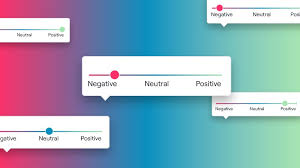
Data Collection for Sentiment Analysis: Where and How to Gather Review Data (Amazon, Yelp, IMDB & More)
Sentiment analysis data collection
Collecting sentiment analysis data means gathering lots of real user reviews. Reviews are great because they’re full of genuine opinions and emotions. As one data scientist notes, “reviews serve as the lifeblood of every business,” and with online platforms users write thousands of reviews daily. In this guide, we’ll show how to collect review data for sentiment analysis and then clean review data for machine learning. We’ll cover top sources – Amazon, Yelp, IMDb, plus Kaggle and Reddit – and discuss best practices (including ethics) and preprocessing steps to prepare your data.
Why Review Data Matters in Sentiment Analysis
Review datasets are a goldmine of natural language. They are written by real people describing experiences, so they capture opinions, emotions and context better than many other text sources. For example, sentiment analysis aims to extract attitudes and emotions from text, whether it’s product feedback or social media posts. Reviews often come with helpful metadata like star ratings or timestamps, which makes labeling easier. Big companies use this: e-commerce brands analyze Amazon reviews to improve products, restaurants read Yelp reviews to boost customer satisfaction, and movie studios study IMDb reviews to gauge audience reaction. In fact, popular public datasets like the Kaggle Amazon Fine Food Reviews contain hundreds of thousands of entries (the Kaggle dataset has ~568,000 reviews). All of this real-world data is exactly what machine learning models need to learn sentiment.
Where to Collect Review Data
Amazon Reviews

Amazon product reviews are incredibly diverse (books, electronics, groceries, etc.). You can gather them in a couple of ways:
- Amazon Product Advertising API: Amazon’s official PA-API provides structured product data (including reviews and ratings). It can return data directly, but it has strict rate limits and requires an approved developer key. The API is useful for real-time access, but you’ll face limits on how much you can pull and it may not include all fields you need.
- Web Scraping: Some use Python (e.g. Scrapy or Selenium) to scrape Amazon’s website. Technically this can get any review text, but be very careful: Amazon’s Terms of Service explicitly forbid “using any automated process or technology to access… any part of the Amazon Website”. So you risk being blocked or banned. If you do scrape, respect robots.txt and throttle your requests.
- Public Datasets: There are existing Amazon review datasets (e.g. on Kaggle or AWS Open Data) that have been compiled by others. For example, Kaggle hosts multi-million-review datasets. These can save time and avoid legal issues.
Yelp Reviews
Yelp is a rich source for business/customer sentiment (restaurants, shops, etc.). Yelp provides the Yelp Fusion API for data access. With this API you get business info and limited review data. Key points:
- You need a Yelp developer account and API key. The free plan grants up to 30,000 API calls per month (up to 5,000 calls per day).
- The API returns business details (name, location, rating, etc.) and review excerpts. IMPORTANT: Yelp only gives you up to three short review excerpts (about 160 chars each) per business. You won’t get full review text unless you scrape or use a third-party.
- Because of these limits, many sentiment projects use Yelp’s API to gather metadata and then complement it with other sources. Again, always obey Yelp’s ToS and caching rules.
IMDb Reviews
IMDb is famous for movie ratings and reviews. IMDb itself does not offer a public API for user reviews, but it does provide free datasets (IMDb Datasets) in TSV form. These include title info, basic ratings (averageRating, numVotes), and other metadata. However, these official datasets don’t contain the textual review content. To get actual review text from IMDb:
- Web Scraping: Many people use Python tools (BeautifulSoup, Scrapy, Selenium) to scrape the IMDb website. For example, one tutorial shows using Selenium to load all reviews on a movie page and then using Scrapy selectors to extract them. This works but can be slow and should respect IMDb’s policies.
- Community Datasets: Datasets like the Stanford IMDb Movie Review Dataset (50K labeled reviews) are available via sites like Kaggle or TensorFlow/Keras. These are popular for NLP tasks.
In short, use the official IMDb data dumps for movie info and ratings, and use scraping or public NLP datasets to get review text. Tools like BeautifulSoup or Scrapy help parse HTML, and Selenium can automate loading dynamic pages.
Other Sources
Beyond the big three, there are other places to look for sentiment data:
- Kaggle & UCI: Data science sites host many sentiment datasets. For example, Kaggle has Amazon, Yelp, and IMDB review collections (from food reviews to movies) to download directly. These community datasets are often already cleaned and labeled.
- Reddit: Though not “reviews” in the traditional sense, many subreddits (like product or movie subreddits) have rich comment threads. The Pushshift Reddit API allows you to query millions of Reddit posts/comments by subreddit, date range, keyword, etc. It’s a popular way to build custom datasets (e.g. collect 100k comments on stock forums).
- Google Reviews (Places): Google Maps/Places has huge amounts of local business reviews. Google’s official Places API can return reviews (with a key), but it has usage costs. Alternatively, third-party scraping APIs like SerpApi provide a Google Maps Reviews API that automatically handles Google’s blocks and captchas for you. For instance, SerpApi can fetch Google reviews and bypass the usual anti-scraping hurdles.
- Social Media & Others: You can also mine Twitter, Facebook, or forums for feedback. But again, respect each platform’s API rules.
In summary, the best sources for a sentiment analysis dataset are often the major review platforms (Amazon, Yelp, IMDb) supplemented by data repositories (Kaggle) and community APIs (Pushshift, SerpApi).
Best Practices for Ethical and Legal Data Collection
When collecting data, always play by the rules. Before you scrape or pull anything:
- Check Terms of Service: Some sites (like Amazon) explicitly forbid scraping. If a site bans automated access, you should use their official API or find an alternative data source.
- Use Official APIs When Available: Public APIs (Yelp Fusion, Reddit API, Google Places API) ensure you stay compliant. They may limit volume, but they’re safe and legal.
- Respect Robots.txt & Rate Limits: Honor each site’s robots.txt file and don’t hammer servers with requests. Introduce delays (e.g. a few seconds per request) and back off if your IP is blocked. This “respectful crawling” is recommended to “ensure you do not disrupt the normal functioning” of the site.
- Anonymize Sensitive Data: If any user personal info is collected, remove or hash it. Use data only in aggregate. As one guide notes, implement security measures and “consider anonymizing or aggregating the data wherever possible.”.
- Stay Informed: Terms of service and legal rules can change. Periodically review the site’s policies to make sure your data collection remains compliant.
By collecting ethically (using APIs, throttling requests, etc.), you not only avoid trouble but also maintain the quality of your data and analysis.
Data Cleaning & Preprocessing Techniques
Once you have raw review text, you need to clean it before feeding it into a machine learning model. Key steps include:
- Text Cleaning: Remove noise from the text. This usually means converting to lowercase, stripping out HTML tags or scripts, and deleting URLs or special characters. For example, a common regex re.sub(r'<.*?>’,”, text) can remove any HTML tags. Trim extra whitespace and decide what to do with punctuation (sometimes remove it, or keep it if it adds meaning, like exclamation points in sentiment tasks.
- Tokenization & Normalization: Split reviews into words or tokens (e.g. using NLTK’s word_tokenize() or spaCy). Remove common stopwords (words like “the”/“and”/“is”) to focus on meaningful terms, though be careful not to drop negations like “not”. Then apply stemming or lemmatization to reduce words to their root form (e.g. “running” → “run”. Libraries like NLTK’s PorterStemmer or spaCy’s lemmatizer handle this easily.
- Remove Duplicates and Noise: Filter out duplicate reviews (some datasets or scraped sources may have repeats). Also drop any entries that are too short or look like spam (e.g. “Great!” with no context). This ensures your model isn’t biased by repeated data.
- Handling Labels & Structure: Use available metadata to create clear labels. For instance, you might label 4-5 star reviews as positive and 1-2 stars as negative, with 3 stars as neutral. Keep useful fields like the numeric rating, review date, or product/category as separate columns. This structured format (one review per row with label and metadata) makes training and analysis much easier.
The result of cleaning should be a tidy dataset of reviews, each tagged positive/negative/neutral (or with a numeric sentiment score), and free of junk characters. Good preprocessing – what some call preparing clean review data for machine learning – is essential for accurate sentiment models.
Tools & Libraries for Data Collection and Cleaning
There are many handy tools to automate these tasks:
- Web Scraping Frameworks: Python’s BeautifulSoup and Scrapy are great for parsing HTML. Selenium can automate browser actions (useful if the site requires clicks or loads content dynamically). For example, one project showed using Selenium to scroll through an IMDb page and then using Scrapy selectors to pull all review text. (Yes, Selenium is meant for testing, but it works for scraping too!)
- APIs and Wrappers: Many APIs have community wrappers. For Reddit, there are praw, psaw, or pmaw libraries. IMDb has the IMDbPY library for accessing IMDb’s data. The Amazon Product Advertising API has official SDKs. For Google/SerpApi, there are client libraries in Python, etc.
- NLP Libraries for Cleaning: Use NLTK or spaCy for tokenization, lemmatization and stopword removal. TextBlob can simplify text cleaning and even do quick sentiment scoring. And of course pandas is invaluable for loading data files (CSV/TSV) and applying cleaning steps over columns. Pandas’ DataFrame makes it easy to drop duplicates and filter reviews by length.
- Others: Regex is often enough for basic text clean-up. For scraping heavy sites, consider ScraperAPI or Bright Data to avoid being blocked.
Use whichever tools fit your workflow, but always keep code and data organized: test your scraper on a few pages first, and inspect your cleaned text to be sure the steps worked as intended.
Tips for Building a Balanced Dataset
When compiling reviews, be mindful of biases and balance:
- Source Diversity: Don’t rely on just one site. For example, Amazon reviews might reflect one demographic, while Yelp or Reddit gives another perspective. Mixing multiple sources helps your model generalize better.
- Balance Sentiment Classes: Real data is often skewed (many more positive than negative reviews, or vice versa). Try to sample or augment data so that each class (positive/negative/neutral) is represented roughly equally. This prevents the model from just guessing the majority class.
- Time-Based Sampling: If you want models that stay current, include reviews from different time periods. Language and slang evolve, and products change. Periodic sampling (e.g. 50% old reviews, 50% recent reviews) can capture trends and avoid a time bias.
With a diverse, balanced collection of cleaned reviews, your sentiment analysis will be on much firmer ground.
Conclusion
In summary, review websites are some of the best sources for sentiment datasets. Amazon, Yelp, and IMDb (plus community datasets on Kaggle) offer massive collections of user opinions. The key is to collect data ethically (using APIs or careful scraping) and then clean it thoroughly. Remove noise, normalize text, and structure your dataset with clear labels and metadata. By combining multiple sources and balancing your classes, you’ll have a robust training set. Always prioritize data quality and legality: a well-curated, ethically-collected dataset will lead to much better machine learning models than a hastily scraped one.
Ready to get started? Try downloading a public reviews dataset (for example, Kaggle’s “Amazon Fine Food Reviews” has thousands of entries) and take a hands-on tutorial. For instance, Analytics Vidhya’s “Sentiment Analysis Using Python” guide walks through cleaning, modeling, and evaluating sentiment on real reviews. Experiment with these resources, and you’ll soon be turning raw reviews into meaningful sentiment insights. Happy scraping and analyzing!
Stay connected with us on HERE AND NOW AI & on:

